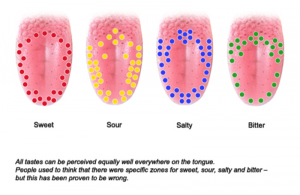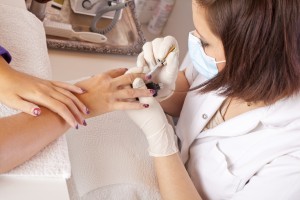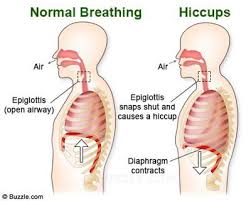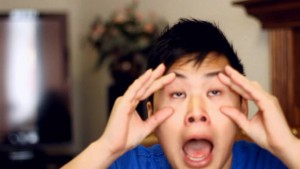Different colors are all around us all the time. I know from previous classes that color is an individual experience and what I see may be different from what the next person sees. For example, my mom and I tend to differ or disagree a lot in how we describe certain colors we see. I also know they can have an impact on our mood, or how we feel, but I am not sure exactly how. I have also previously learned that marketing, like for fast food companies, involve meticulous selection of color because on the way it can impact the consumer. I am interested to find out how our brain processes color and how those colors can have an effect on human emotion.
First, let’s find out how the human body sees color. Webexhibits.org goes through the whole process. It states that when you see color, it is with the help of the retina, a part of the eye. Located within the retina are different parts called rods and cones. At the end of the rods and cones are proteins which help with either seeing at night, or what we are focused on, seeing color. The cones give us color vision. Once the color has stimulated certain rods, then there is a series of brain for the signal to travel through. First the retinal ganglion cells, then the thalamus, and ending in the primary visual cortex. The eye and brain work cohesively to provide the luxury of seeing color.
Colors serve a greater purpose in our minds. Vanessa Van Edwards describes a little bit about these purposes. Green is good for the eye and can be easily viewed for long periods of time. Orange gets more oxygen to your brain and encourages brain activity. Red increases the heart rate. Blue portrays a sense of tranquility. Lastly, grey is a vibe killer of sorts and does not inspire energy. A basic understanding of these purposes for different colors makes me want to see them in action.
One study at the University of Durby focused entirely on color emotion. There were 31 subjects, all of whom had education in the area of color and imaging, and had some color science training. Before the start of the experiment, the subjects were given definitions of the different color emotions to chose from when presented with a color. They were shown an illuminated individual patch of color one at a time in a dark room. A result of the study was that red, orange, and yellow colors are seen as warm while green, blue and purple colors are the opposite, cool. It is cool to see how colors actually affect mood and emotion in real life.
After all that I have learned, I appreciate color more. I know that not all animals and not even all people can see as many colors as I can. Not everyone can have the same emotional experience from color that I can, and I am truly grateful for that.
















